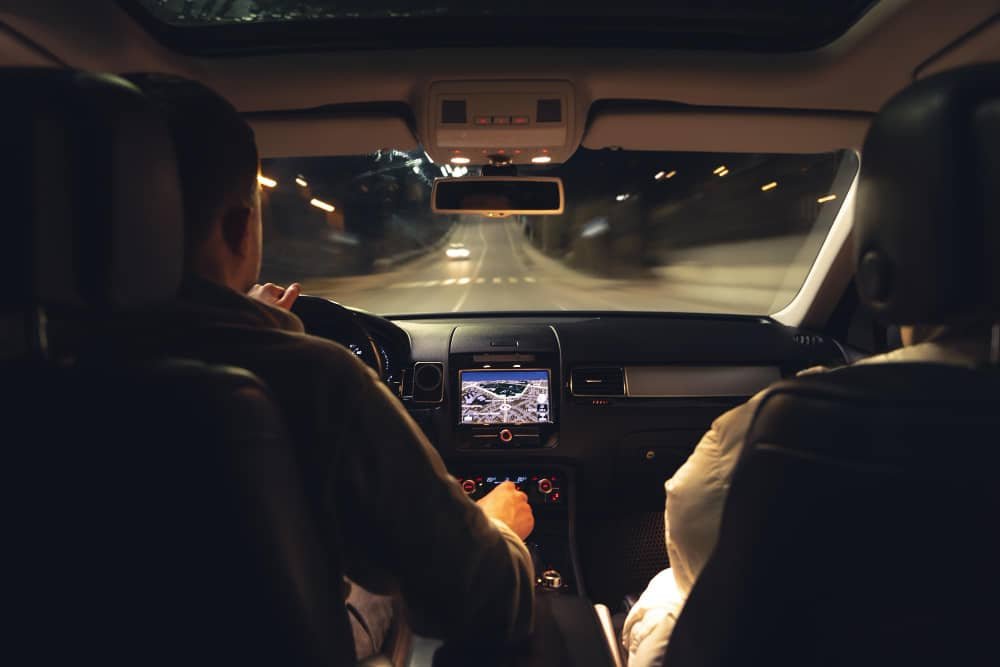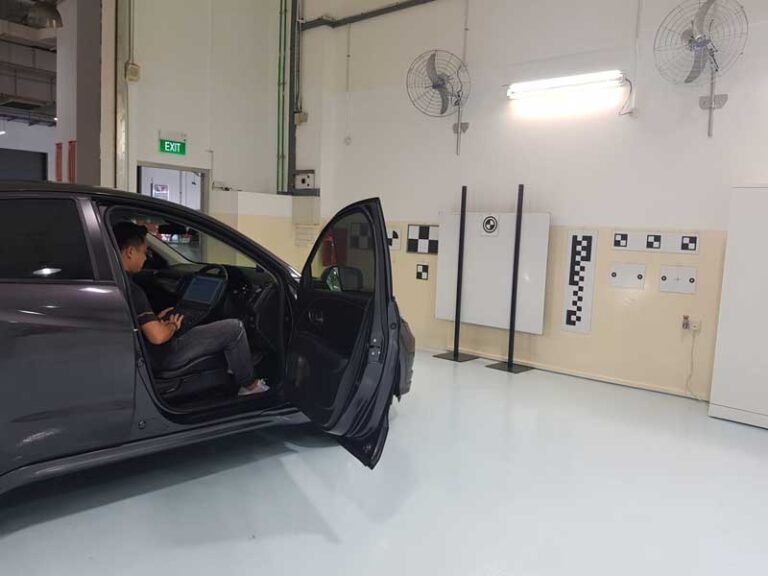In recent years, the integration of advanced driver assistance systems (ADAS) has become increasingly common in vehicles, enhancing driver safety and improving the overall road experience. At the core of these systems are windshield cameras, which play a crucial role in detecting and interpreting the surrounding environment. However, with time, these cameras might need re-calibration due to various factors, such as vehicle repairs, replacements, or changing environmental conditions.
This article delves into the realm of static windshield camera re-calibration techniques, exploring their significance, challenges, traditional methods, technological advancements, best practices, and future trends. By comprehending the complexities of static re-calibration, our goal is to ensure the accuracy and reliability of windshield camera systems, thereby maximizing their potential for enhancing vehicle safety.
Introduction to Static Windshield Camera Re-calibration
Modern vehicles heavily rely on windshield cameras as an integral part of advanced driver assistance systems (ADAS). These cameras enable features like lane departure warnings, automatic emergency braking, and adaptive cruise control by detecting and interpreting the surrounding environment.
The need for re-calibration
Over time, various factors, including vehicle maintenance, road conditions, and minor accidents, can lead to the misalignment of the windshield camera. This misalignment can result in inaccurate readings and reduced functionality of the ADAS features. Therefore, re-calibration is essential to ensure the camera accurately detects objects and provides reliable data to the vehicle’s safety systems.
Significance of accurate re-calibration for vehicle safety
Proper re-calibration of the windshield camera is crucial for maintaining overall vehicle safety. Accurately calibrated cameras ensure that ADAS features work as intended, preventing accidents and reducing the severity of collisions. Neglecting re-calibration could compromise the effectiveness of these safety systems, posing risks to both the driver and passengers.
Importance of Windshield Camera Re-calibration for Vehicle Safety
The role of windshield cameras in advanced driver assistance systems (ADAS)
Windshield cameras act as the eyes of ADAS, providing vital information about the surrounding environment to enable features such as forward collision warning, pedestrian detection, and traffic sign recognition. These systems rely heavily on accurate and reliable data from the camera to make split-second decisions, enhancing vehicle safety.
Impact of improper re-calibration on ADAS functionality
Improper re-calibration can have significant consequences for ADAS functionality. If the camera is misaligned or provides inaccurate data, ADAS features may not function as intended. For instance, a misaligned camera may fail to detect obstacles or interpret lane markings incorrectly, leading to delayed or inappropriate responses from the safety systems.
Real-life examples of accidents caused by faulty camera calibration
Instances of accidents caused by faulty camera calibration highlight the critical importance of proper windshield camera re-calibration. A misaligned camera may fail to accurately detect pedestrians crossing the road, resulting in the failure of automatic emergency braking. Ensuring proper calibration can prevent such accidents and enhance safety for both drivers and pedestrians.
Common Challenges in Static Windshield Camera Re-calibration
Environmental factors affecting calibration accuracy
Re-calibrating windshield cameras can be challenging due to environmental factors as well as windshield camera re-calibration techniques . Extreme temperatures, strong vibrations, and debris on the camera lens can all affect the accuracy of the calibration process. Creating optimal conditions is essential for successful re-calibration.

Types of calibration errors and their implications
Calibration errors can manifest in various ways, such as lateral offset, vertical alignment, or angle deviation. These errors can lead to inaccurate detection of objects, false warnings, or improper functioning of ADAS features. Understanding specific types of errors and their implications is crucial for effective troubleshooting and calibration resolution.
Technological limitations in static re-calibration
While static re-calibration techniques have advanced, there are still technological limitations to consider. Some vehicle models may have limited adjustment capabilities, making precise calibration challenging. Additionally, the complexity of ADAS systems and evolving camera technologies require continuous updates and advancements in re-calibration techniques.
Traditional Techniques for Static Windshield Camera Re-calibration
Manufacturer-specific re-calibration procedures
Vehicle manufacturers provide specific procedures for re-calibrating the windshield camera. These procedures may involve using specialized diagnostic tools, accessing hidden menu options, or following precise steps to ensure accurate re-calibration. Following the manufacturer’s guidelines is crucial for maintaining warranty coverage and achieving optimal results.
Using specialized calibration targets and tools
Specialized calibration targets, such as patterns or boards, assist in aligning the camera correctly during re-calibration. These targets ensure that the camera is precisely positioned and oriented as per the manufacturer’s specifications. Specialized tools aid in adjusting the camera mount or lens parameters for accurate calibration.
Manual adjustment methods
In some cases, manual adjustment methods may be used to fine-tune the camera’s alignment. These methods involve physically repositioning the camera mount or making minor adjustments to achieve the desired calibration. Manual adjustment techniques require skill and precision but can be effective when manufacturer-specific procedures or tools are unavailable.
Advanced Technologies for Static Windshield Camera Re-calibration
Windshield Camera Re-calibration Techniques
Automated calibration systems
Automated calibration systems have eliminated the challenges of manual re-calibration. Using cutting-edge technology, these systems precisely align the windshield camera without human intervention, simplifying the process.
Computer vision and machine learning-based re-calibration
Computer vision and machine learning have revolutionized windshield camera re-calibration. By analyzing images and patterns, these technologies intelligently detect misalignment and automatically adjust camera settings, making calibration more efficient.
Integration with vehicle diagnostic systems
Integrating the re-calibration process with vehicle diagnostic systems allows comprehensive evaluation of the entire system. This integration ensures that any potential issues are detected and resolved, guaranteeing optimal camera performance and accuracy.
Best Practices and Guidelines for Static Windshield Camera Re-calibration
Importance of following manufacturer instructions
To ensure proper calibration, it is crucial to follow the manufacturer’s instructions meticulously. Trusting in the experts and adhering to their guidelines minimizes the chances of improper calibration compromising vehicle safety.
Precautions for accurate re-calibration in various weather conditions
Taking precautions to achieve accurate results, regardless of weather conditions, is vital. Proper shelter, temperature control, and a clean windshield are crucial factors to consider during the re-calibration process.
Quality assurance checks and post-calibration validation
After re-calibration, conducting quality assurance checks is essential to validate the camera’s performance. Ensuring that the camera captures the right angles, detects objects accurately, and provides reliable information is crucial for on-road safety.
Future Trends in Static Windshield Camera Re-calibration Techniques
Advancements in sensor technology
Advancements in sensor technology are set to revolutionize re-calibration. Expect to see more advanced sensors that can self-adjust and calibrate, simplifying the re-calibration process.
Integration of artificial intelligence for dynamic re-calibration
Artificial intelligence will play a key role in re-calibration. Cameras may adapt to different lighting conditions and learn from driving behaviors, ensuring optimal performance without human intervention.
Standardization efforts in re-calibration procedures
Standardization efforts aim to establish consistent guidelines and protocols for re-calibration processes. This will ensure universally understood and followed procedures, simplifying re-calibration for all involved.
In conclusion, static windshield camera re-calibration is vital for maintaining the functionality and effectiveness of advanced driver assistance systems. By following best practices and utilizing advanced technologies, we can overcome the challenges associated with re-calibration and ensure accurate and reliable performance.
As sensor technology and artificial intelligence continue to advance, the future of re-calibration looks promising, further enhancing the safety and efficiency of our roads.

